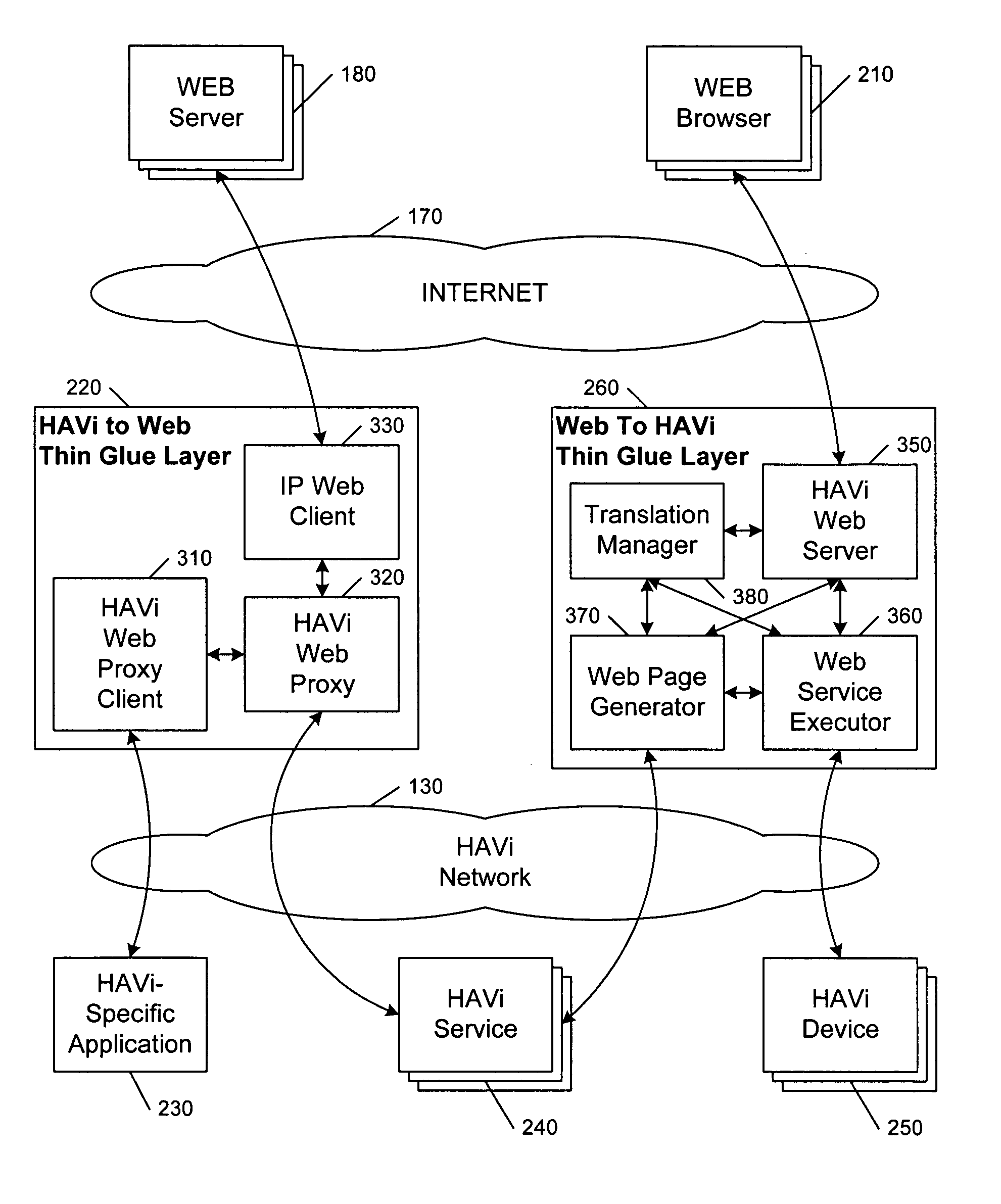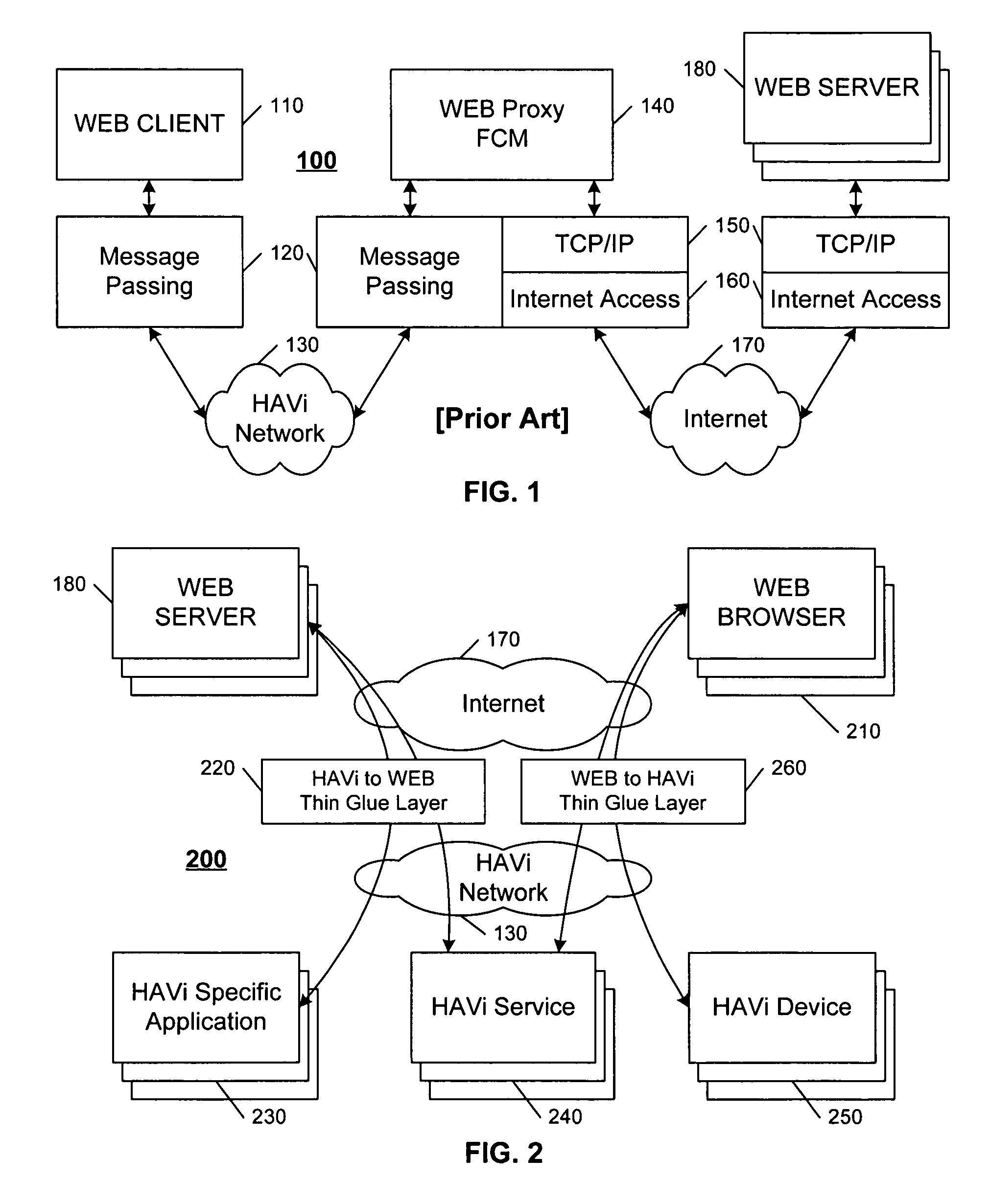Architecture of a bridge between a non-IP network and the web
a technology of non-ip network and bridge, applied in the field of consumer electronics, can solve the problems of limiting the use of web-browser control to “local” web-browser, preventing remote control via internet link, and general limited interaction, and achieve the effect of simple and efficien
- Summary
- Abstract
- Description
- Claims
- Application Information
AI Technical Summary
Benefits of technology
Problems solved by technology
Method used
Image
Examples
Embodiment Construction
[0022]For ease of understanding and illustration, the invention is presented using a HAVi network as a paradigm for a non-IP-compliant network, although the principles of the invention are not limited to a HAVi network, and one of ordinary skill in the art will recognize the parallels between the HAVi specification and capabilities and the specification and capabilities of other non-IP-compliant (Non-IP) networks.
[0023]In accordance with this invention, and as illustrated in FIG. 2, a bridge is formed between the Internet 170 and a HAVi network 130 via two thin glue layers 220, 260. These glue layers 220, 260 enable symmetric and efficient access of services between the HAVi network 130 and the Internet 170. For example, it enables a HAVi-specific browser 230 to access Internet services 180, and allows existing Web browsers 210, such as Netscape or Internet Explorer, to access services 240 provided by the HAVi network 130, and to control devices 250 on the HAVi network 130.
[0024]The...
PUM
 Login to View More
Login to View More Abstract
Description
Claims
Application Information
 Login to View More
Login to View More - R&D
- Intellectual Property
- Life Sciences
- Materials
- Tech Scout
- Unparalleled Data Quality
- Higher Quality Content
- 60% Fewer Hallucinations
Browse by: Latest US Patents, China's latest patents, Technical Efficacy Thesaurus, Application Domain, Technology Topic, Popular Technical Reports.
© 2025 PatSnap. All rights reserved.Legal|Privacy policy|Modern Slavery Act Transparency Statement|Sitemap|About US| Contact US: help@patsnap.com



